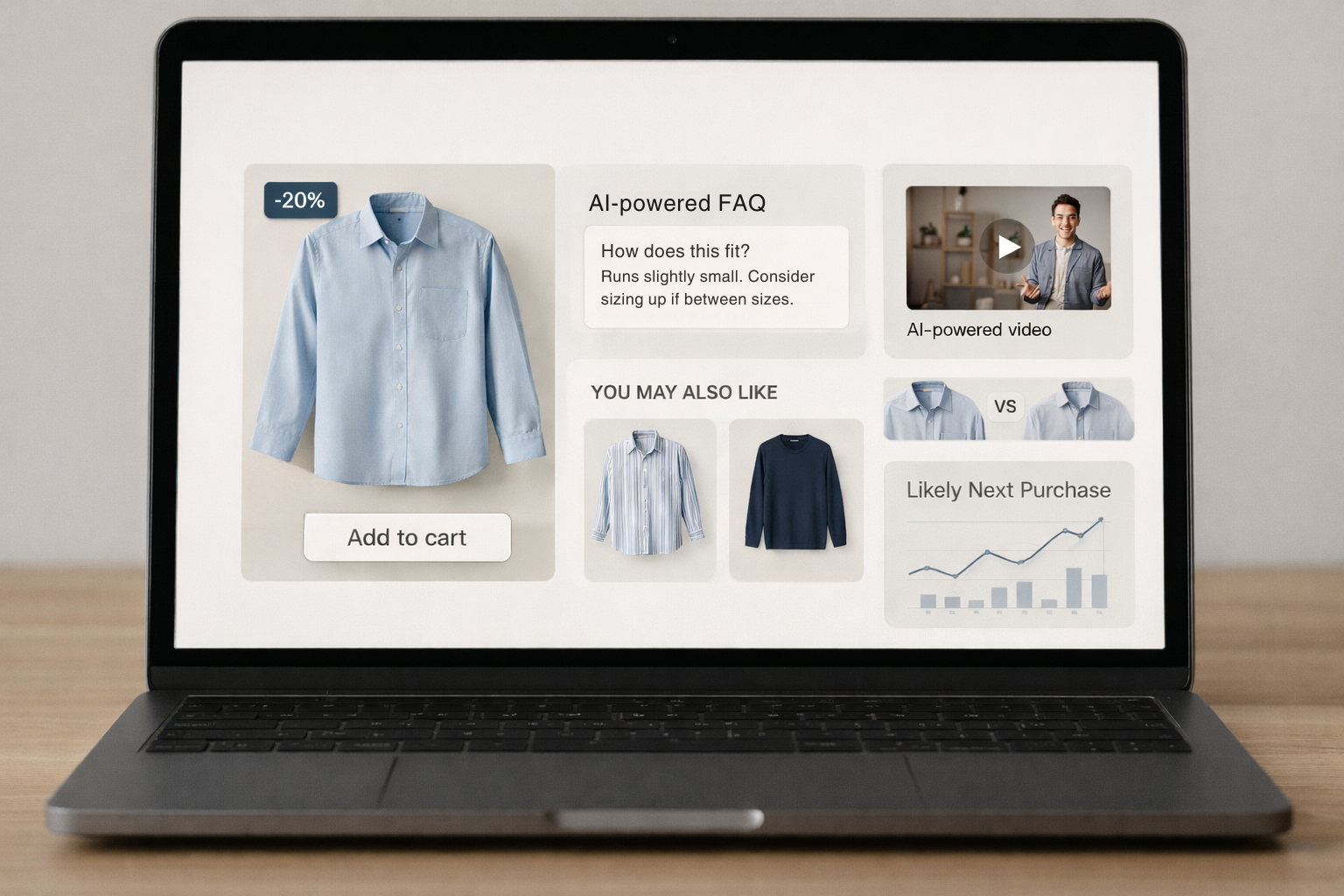Note: The full recording of this webinar is available on-demand here.Welcome to another session of Firework's webinar series, "Commerce Conversations," where we explore the most pressing topics in the world of commerce. These fireside chats bring together industry experts to share insights and experiences, offering valuable perspectives on current trends and future directions in commerce. In this session with commerce experts Amie Owens and Jason Holland, we explore crucial topics like the transition from traditional in-store shopping to new media consumer behaviors, the critical role of human connection in digital ecosystems, and the increasing importance of authentic content in commerce. To gain a comprehensive understanding of these significant shifts and receive expert advice on navigating these changes, we encourage you to watch the full webinar for in-depth insights and retail strategies from industry leaders.
Introducing Our Experts
Amie Owens, currently leads as the US Head of Commerce at Universal McCann. Starting her career in New York City, Amie was instrumental in developing in-store strategies in the early days of retail media. Her career trajectory took her to McCann, where she applies her deep experience to help her clients improve their retail presences. Recognized for her contributions and leadership, Amie has been honored in as on the “40 under 40” 2023 list for both AdAge and Path to Purchase Institute. Jason Holland, Firework’s Chief Business Officer, brings a wealth of experience and innovation to the commerce sector. Prior to this role, he was the Chief Operating Officer at Evolve Media, LLC and held various leadership positions at other companies, including Empower MediaMarketing and dunnhumby. Additionally, Jason is a member of the Advisory Board for the John W. Altman Institute for Entrepreneurship at Miami University. His career has consistently focused on developing strategic partnerships and driving organizational growth.
Firework Commerce Conversation with Amie Owens
The Evolution of Commerce
To adapt to the changing ways people shop and consume media, brands have undeniably shifted focus from primarily in-store interactions to an increasing focus on digital experiences. This transition, accelerated by the pandemic, has led consumers to heavily rely on media and technology for their shopping needs. “90% of us bought something differently whether they drove to the store and someone brought out their packages or received a delivery,” explains Owens. In response, retailers have had to completely rethink the way they go to market to bridge the new omnichannel — online and offline — behaviors of their customers.Jason Holland adds to this by emphasizing that brands must deeply understand what garners attention and drives engagement in the digital commerce space: "Blending what has been that upper funnel entertainment component with that lower funnel conversion” is the approach many marketers have discovered is needed. This also includes the the adoption of new omnichannel supporting tactics, such as QR codes to create a seamless link between physical and digital shopping experiences.These trends underscore a clear direction for the future of commerce, where businesses must blend in-store and online experiences, adapting their retail strategies to meet customers in the evolving digital marketplace.
Collaboration and The Power of Dialogue
While online commerce adoption is booming, an interesting trend to note is the consumer's yearning for genuine human connection. This development is transforming the traditional online approach to customer engagement, moving from a transactional to a more conversational model. Amie Owens highlights the importance of this shift, emphasizing the need for ecosystems that cater to the consumer's preferences in content consumption. "These ecosystems need to provide consumers the ability to consume the content they want, in the medium they want and at the time they want," she explains. This approach necessitates a deep understanding of consumer behaviors and preferences, underscoring the need for brands to listen actively and adapt their strategies accordingly.The integration of live commerce technologies is a pivotal step in aligning digital and physical shopping experiences. As Jason Holland points out, "the ability to take a one to many video and apply AI and have that live in an interactive capacity where it's always on..." highlights the transformation in how customers interact with brands online. Live commerce platforms effectively recreate the in-store experience in a digital space, fostering more personalized and human connections. This innovative approach not only enriches the shopping experience but also delivers significant business benefits. By incorporating live commerce on websites or apps, businesses can drive higher interest in products, shorten the sales cycle, and ultimately boost conversion rates, sales, revenue, and profits.To effectively engage in the current commerce environment, brands need to integrate and collaborate with new technologies. This integration aims to create ecosystems that support two-way dialogues and personalization. It's crucial for these systems to be adaptable, allowing consumers to access content when and how they prefer. However, it's important for brands to avoid forming partnerships that lead to fragmented systems. Such disjointed collaborations can create barriers in communication, hindering the intended seamless interaction between consumers and brands.
Authenticity and Human Connection in Content
In the current commerce landscape, there's a noticeable shift towards content that is authentic and simple, moving away from the traditional high-production approach. Consumers now favor content that mirrors their everyday experiences, prompting brands to rethink their content strategies. Amie Owens reflects on this, highlighting, “Consumers want to feel connected to the content, they want the content to feel like a reflection of their everyday life.” This trend signifies a move towards content that fosters a continuous, two-way conversation.The shift towards user-generated content and AI-driven methods is becoming increasingly prominent in commerce. Jason Holland articulates this change, noting, “We see partners trying to help brands generate user-generated video reviews, leverage AI to mimic always-on connection.” These retail strategies enable brands to establish a continuous engagement with consumers, fostering a platform for consistent interaction and feedback. This approach, particularly effective in live commerce, enhances real-time interaction and personalizes the shopping experience, aligning with the evolving preferences of today’s consumers.Live shopping in the US is expected to reach 35 billion dollars by 2024, a substantial increase from previous years. This trend underscores the vital role of engaging, authentic content in achieving commercial success. In an increasingly digital marketplace, content that personally resonates and promotes ongoing dialogue is essential for brands aiming to effectively connect with their audience.
Final Thoughts
Watch the full webinar between Amie Owens and Jason Holland to better understand the evolving trends in consumer shopping behaviors. Here are a few of the key insights and retail strategies shared by these industry experts for businesses looking to adapt to these changes:
- Shift from In-Store to Digital Commerce. Businesses should focus on enhancing their online platforms, ensuring they provide a seamless and engaging customer experience that mirrors in-store interactions.
- Importance of Two-Way Dialogue. Develop strategies to facilitate meaningful customer engagement in digital ecosystems. Listen to customer feedback and adapt marketing approaches to foster a sense of community and connection.
- Rise of Authentic Content. Embrace content that reflects consumers' everyday experiences. Utilize tools like user-generated content and AI to create more relatable and authentic marketing materials.
The webinar, now available on demand, is a resourceful tool for those in marketing, eCommerce, and customer experience, offering insights and strategies for adapting to these consumer behavior trends. Access the full recording here.
Unlock Exclusive Insights
By submitting this form, you agree to Firework's privacy policy and consent to receive personalized marketing communications. You can unsubscribe at any time.




























